Field Crop Update June 17, 2021
Erik Smith, Area Field Crop Specialist
Central New York Dairy and Field Crops
Field Crop Update for June 17, 2021.
1. Field Observations
It's hard to believe, but some folks in Bainbridge (Chenango Co.) woke up to frost this mid-June morning (and perhaps others in our region). High barometric pressure, no breeze, and clear skies are the perfect recipe for radiational cooling. And valleys are especially vulnerable to this type of frost as the cold air can pool. Oddly enough, the land immediately up the hill may be fine, as the freezing air can roll on past.
The growing point of corn can be killed if the temperature is near 32F for a few hours, or 28F for a few minutes. Damage will show as water-soaked leaves 1-2 days after the event, but one should wait 5-7 days to assess damage to see how plants react. Much of the corn acreage in our region is V5 or younger (and I suspect this is certainly the case in the frost-affected area), which means the growing point is safely underground. Even heavily-defoliated corn at this early stage can recover and yield as well as undamaged corn, so it's best to wait a week and see if there is regrowth. Wait a similar period of time to assess damaged soybeans.
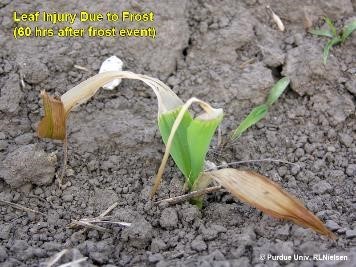
Several folks have taken second cutting of hay or will next week, so the window for alfalfa weevil damage is mercifully closing soon. Leafhoppers have shown up in notable numbers as of this week, but nothing approaching threshold yet. More pests in section 3….
2. Growing Degree Days as of June 16th (See: Climate Smart Farming Growing Degree Day Calculator)
Growing degree days (GDD) are calculated by taking the averal daily temperature and subtracting the base temperature for development of a given organism ((High + Low)/2 - base temp = GDD). For corn silage, we are using base 50/86, as corn development starts at 50 degrees F and ceases above 86.

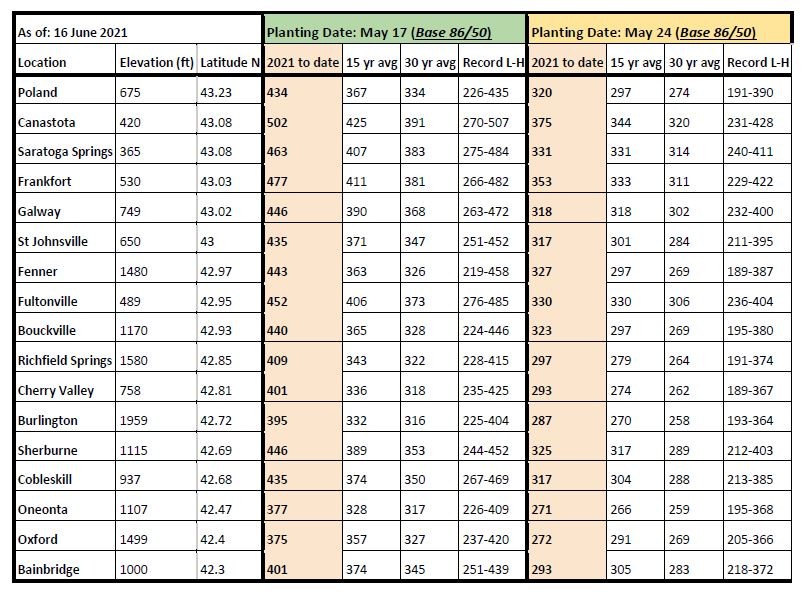
Virtually unchanged from a week ago, some of us are still in the "abnormally dry" category in the drought monitor. Please see the attached document from Joe Lawrence, PRO-DAIRY, for resources for forage management in a drought situation.
We're forecast to have some scorching temperatures through the weekend with scattered thunderstorms through the first half of next week, followed by mild, fair weather.
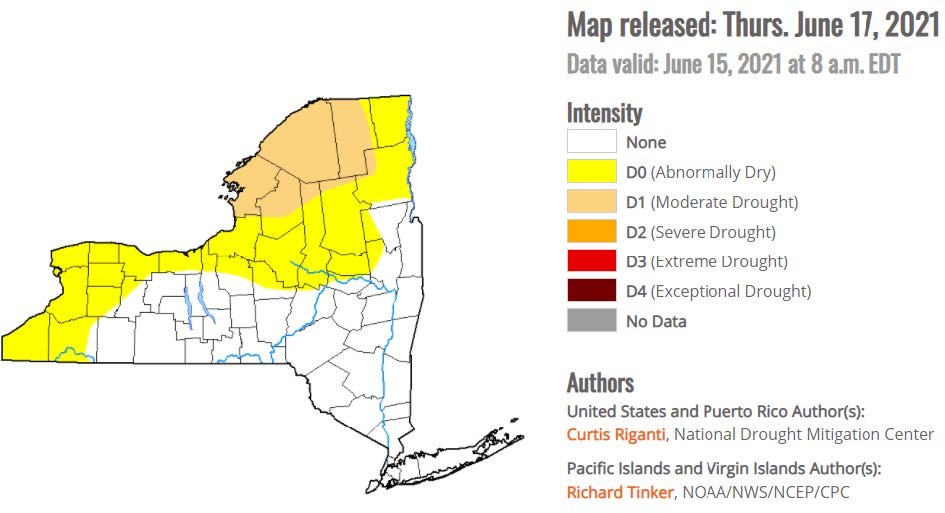
3. Pest Monitoring
Some helpful links:
New York State IPM Weekly Field Crops Pest Report
Potato Leafhopper Scouting and IPM Thresholds in Alfalfa (VIDEO)
This year we will again monitor for several pests of corn and soybean using pheromone-baited traps, including black and western bean cutworms, true armyworm, and the invasive soybean pests (and as-of-yet undetected) silver Y moth and golden twin spot moth.
This is our last week of monitoring black cutworm, as the first wave of adults has passed. Check your young plants for damage. Once again, the thresholds for damage from this pest:
Corn at V2 stage (2 fully emerged leaves with leaf collars) - 2 cut plants per 100
Corn at V3 stage (3 fully emerged leaves with leaf collars) - 3 cut plants per 100
Corn at V4 stage (4 fully emerged leaves with leaf collars) - 5 cut plants per 100
Corn at V5 stage (5 fully emerged leaves with leaf collars) - 7 cut plants per 100
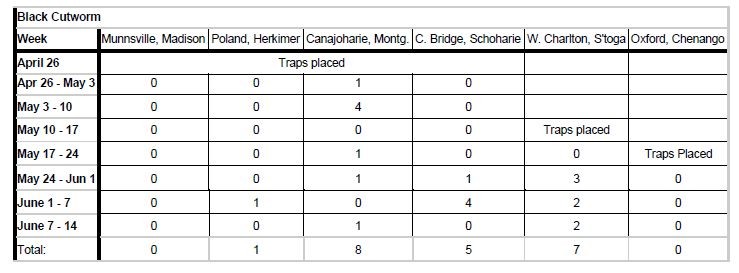
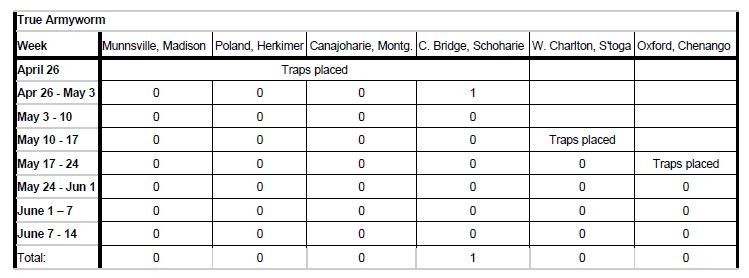
From this point on, we will begin monitoring for western bean cutworm. We will continue to monitor true armyworm for another month.
I've seen lots of winter grain fields with tracks in them, which means they've been spraying with fungicides - which is probably for the best, considering the current risk. The image below shows the current risk for fusarium head blight in winter wheat (green = low risk, orange/brown = high). Our region is still mainly in the medium-high-risk range.
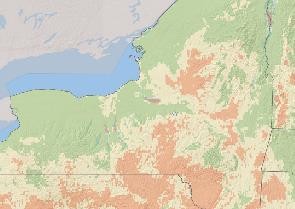
I STILL want to collect your fall armyworm adults and larvae this summer! While Bt has done a good job of controlling fall armyworm on conventional corn here in the US, it's still a concern in our non-GMO corn and grass crops, and is a major invasive pest in other parts of the world. I'm teaming up with a group in southeast Asia who is studying this pest and its genetic variability around the world, so I'm looking for locations to place pheromone traps so I can collect specimens for them to evaluate. Let me know if you have a field that would be a good trapping candidate this summer, and regardless, please let me know if you encounter larvae:
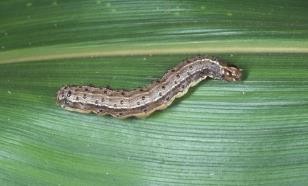
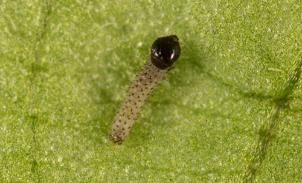
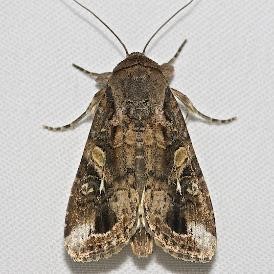
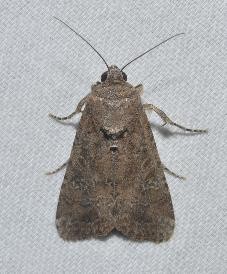
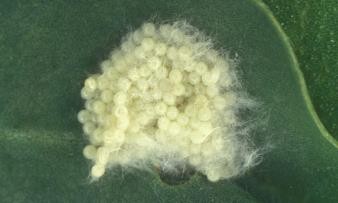
Resources for Forage Management in a Drought Situation (pdf; 1003KB)
Upcoming Events
New York State Fiber Conference
June 9, 2024
Bouckville, NY
Theme for this year: Quality Matters
Announcements
Cash Rent and Custom Harvest Survey
To date, there is limited information available about rental rates and fees for crop harvesting. Farms can use this valuable information for their farm business planning to help improve decision making and profitability.Farmers Can Join MeatSuite For Free!
MeatSuite.com is a free resource provided by Cornell University where NY meat farmers can create a farm profile and list their bulk (wholes, halves, quarters) and bundled (i.e. Grilling Bundle) meat products.Why should farmers join?
1. It's free and easy!
2. Connect with more local customers. In the past year the MeatSuite.com farm directory had 8,300 visits from New York consumers. Farm profiles get as many as 25 views per month from potential local customers. We also spotlight MeatSuite farms on social media and bring attention and purchases to farms through highlights and giveaways.
How do I join?
Farmers can visit https://www.meatsuite.com/farmers/ to create a free farm profile. You must list at least one product for your farm's profile to go live. You'll also have access to Cornell's free Meat Price Calculator, a helpful tool for pricing your meat to make a profit.
While you're on MeatSuite, check out the "Creating Consumer-Friendly Bulk Meats" publication on the log-in page. It has tips on how to create bulk meat products that are easier for first-time buyers to say "yes" to.
If you have any questions as you create your farm profile or products, we're here to help! Please email Matt LeRoux at mnl28@cornell.edu.




